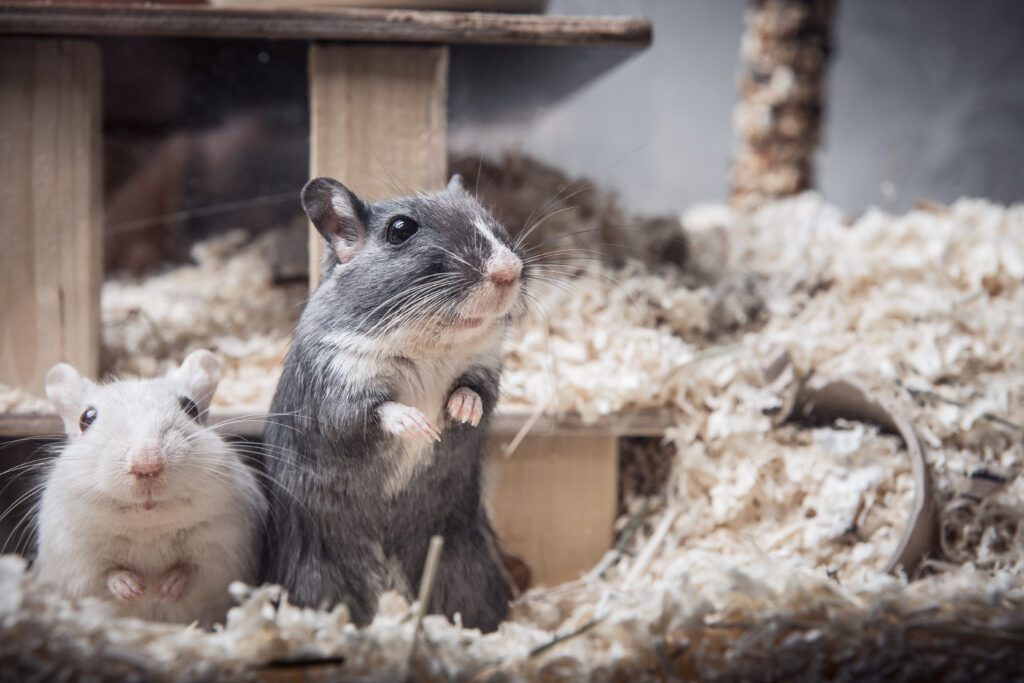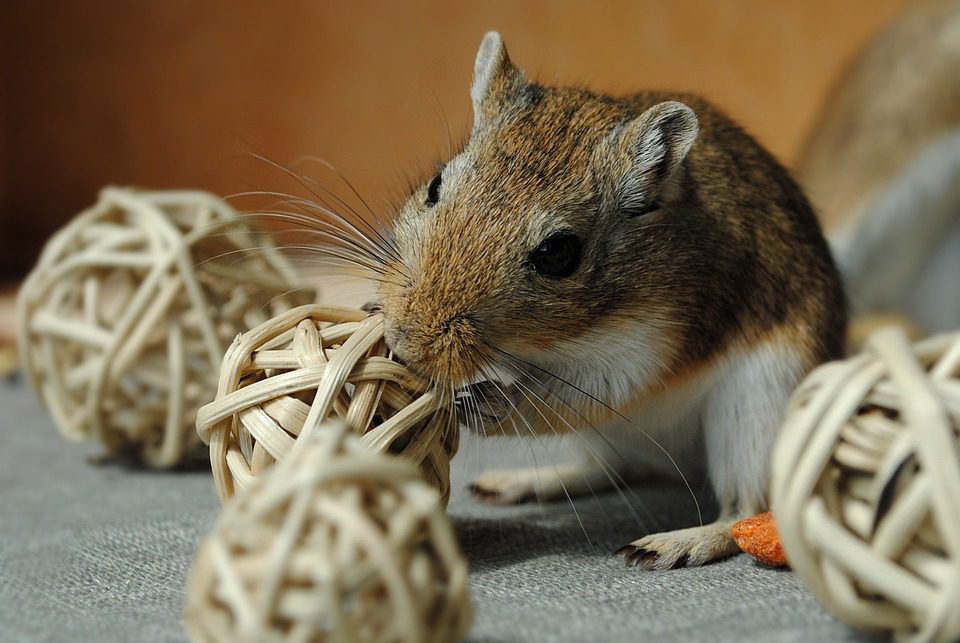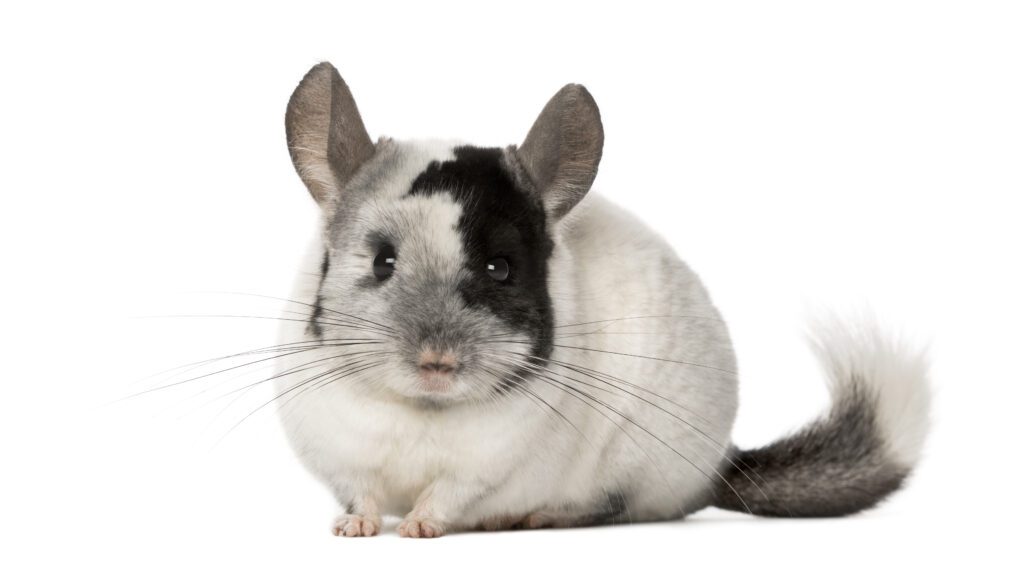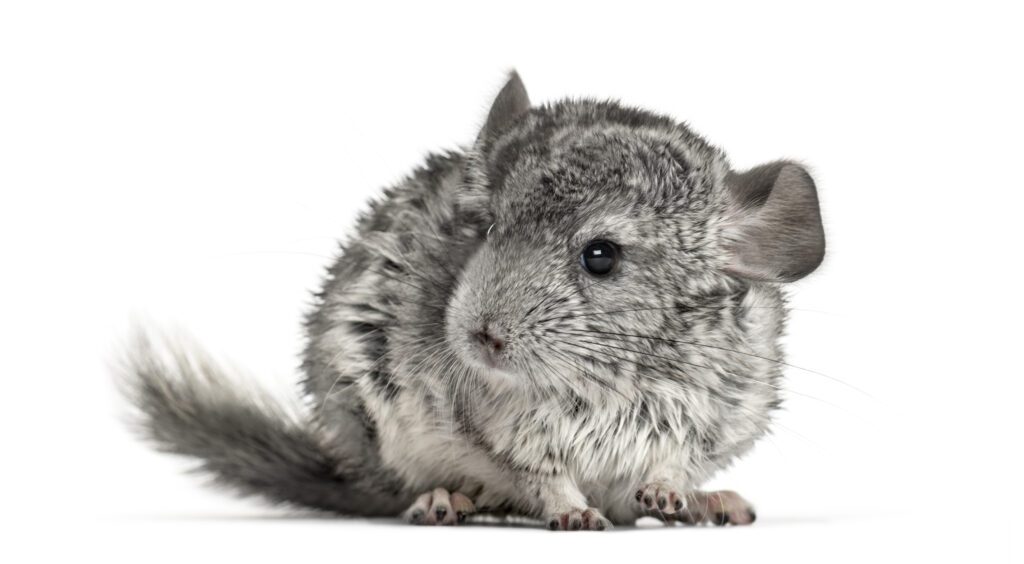Certain cat breeds are known for their tomcat personality, but this might make them a little more difficult make you mad. Each cat has a unique temperament, but some breeds are more prone to aggression than others. Understanding these traits helps owners prepare for the commitment of raising an aggressive house cat.
Today, we will break down the 10 most aggressive cat breeds, detailing their temperament, care needs and how to best deal with each of them.
How Aggression Works in Cats
Feline aggression can stem from a multitude of causes. Such as territorial instincts, fear, over stimulation, or health problems. Other breeds tend to be high-strung or more solitary than others, which can result in aggression. Cats can be aggressive, but that makes sense when you realize aggression is how most cats defend themselves and their territory when they sense a threat. However, in order to successfully manage these behaviors we must first understand the cause of our cat/cats aggression.
Aggressive Cat Behavior: Common Signs
Identifying aggressive behavior early on allows you to intervene before it snowballs. Here are some key signs:
Hissing or growling–These are obvious signs the cat feels threatened.
Swatting or biting — Aggressive and defensive cats will often bring out the claws when they feel threatened.
Ears pulled back against the head or continued glaring eyes: These are physical signs that signal a cat is defensive and about to strike.
Agitated or in Defensive mode: tail twitching or puffing up
Dilated pupils — this indicates increased arousal and possible aggression
You will be able to identify these signs which is going to help you in avoiding incidents and make life peaceful for both you as well as your cat.
The 10 Most Aggressive Cat Breeds
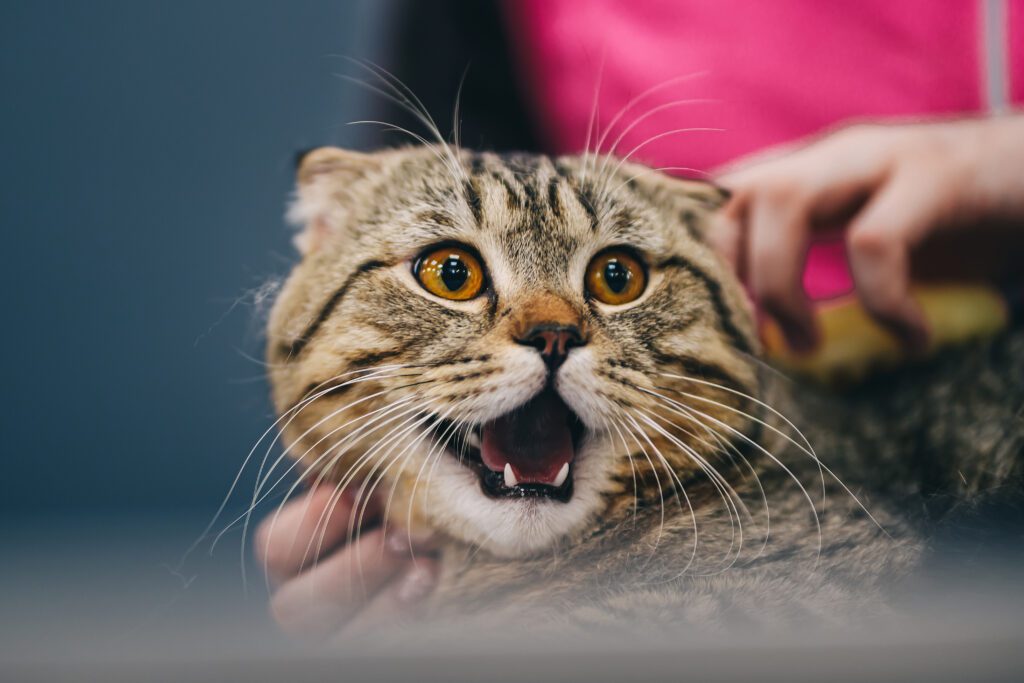
TOPICS COVERED
Toggle1. Siamese Cats
Siamese cats are some of the most vocal and demanding creatures out there. They are loving to their owners but can also get jealous and possessive causing aggressive behavior. They don’t like to be alone and will tend to become destructive if bored. Being one of the least likely cats to tolerate strangers, Siamese are very territorial and may aggress toward you and other pets. These types need to be fed, and if no one feeds them, they can become feral.
Care Tips:
– Siamese cats need a lot of attention, so expect to be interacting with them quite a bit!
-Keep them stimulated with toys, games and interactive puzzles to eliminate boredom.
-Aggression towards Strangers Can Be Reduced with Proper Socialization from Young Age
2. Sphynx Cats
Although Sphynx cats are famed for their unusual hairless looks, they also have bold personalities. They are often more cantankerous than other breeds. Some have less coat than others, making them more sensitive to touch, temperature and overstimulation leading to irritability. They are loving with their owners but can be aggressive if they feel stressed or overstimulated.
Care Tips:
– Because of the oily nature of their skin Sphynx cats require regular baths, which also adds to their sensitivities.
-Keep them in a nice comfy place, warm bedding and gentle hands.
– Reduce over stimulation during play and physical interactions.
3. Bengal Cats
The Bengal in particular has much of its wild ancestry intact. They are so active and requires a space to run & climb. Without enough mental and physical stimulation, they can get bored and aggressive towards other animals or even their owners. In addition, Bengal cats also have a high tendency to hunt and so can sometimes display behavioral aggression.
Care Tips:
-Bengals require a lot of physical activity, so you will be well advised to spend on cat trees and areas for play.
-Daily interactive play can help them release energy and work out aggression.
-Plus training and sociability during puppyhood can keep them from acting out on their primal instincts.
4. Savannah Cats
Savannah cats are by breeding domestic cats with African servals. Their wild side is a major reason they can be more unpredictable than other breeds. These cats are hyperactive and need room to run—lots of it. When bored or caged, their aggression could be shown in different ways like breaking things at home or antagonizing other pets. Due to their feral instincts, they are extremely territorial, and won’t likely get on very well with other cats/animals.
Care Tips:
Savannahs do require a larger environment and need lots of vertical real estate to climb.
– To fulfill their instincts for hunting, you’ll want to play with them and interact quite often.
– Have a longer learning curve for training and socialization versus some other cats.
5. Bombay Cats
The Bombay is fusiform in shape, with sleek looks that resemble little panthers, and a disposition to match their fierce appearance. They can be lovable but they do not appreciate rough, careless or disinterested handling. In those times, if they feel that you crossed their line of respect or shooting over the line of overstimulated, then they may get aggressive. Because they are so dominant, a characteristic of theirs, when they feel like the box is kind of dominating them back — which happens like every single time — they go off-course.
Care Tips:
-Try gentle approach, manners with them whenever near to kids
-Offer them brain teasers to not be that bored
-If you live in a multi-pet household, early socialization can lead to less aggressive behavior.
6. Scottish Fold Cats
Known for its signature folded ears and laid back personality this breed has been known to have a unpredictable temper as well. They can only be aggressive when they feel pressure. Even though they are really easy going cats most of the time, This will not be well tolerated and you will instantly feel the anger from this beast.
Care Tips:
– Your Scottish Fold has to be in a quiet and calm environment to feel secure.
– Handle them as short sessions as possible — and do not ever overstimulate.
– Changes their routine step by step, so they wouldn’t feel horrified.
7. Egyptian Mau
Even Egyptian Maus, the most high-strung and fastest of all domestic cat breeds, can exhibit aggression due to their abundance of energy. These creatures are very territorial and would rather be the only pet in a home. These independent felines have been known to be aggressive if they feel that someone has breached their space or are startled.
Care Tips:
– Egyptian Maus require a lot of space to roam around or walk.
– They also need ample exercise and play time to remain physically and mentally fit.
Minimize contact with other pets toAvoid territorial aggression
8. Pixie Bob
Pixie Bob cats look and act like little bobcats. They are quite independent and strong-willed but generally affectionate toward their families. If they are confined or restricted too much, they can become aggressive. While Pixie Bobs are smart and trainable, their independent streak means they can be more moody.
Care Tips:
So that they can feel wild – Give them space and opportunities to climb.
Interactive toys will keep them busy and also help avoid aggression outbursts.
But proper training and socialization from a young age are crucial in handling their large personalities.
9. American Wirehair
The American Wirehair is a breed that tends to be more independent and often aloof. They can be cuddly animals but they don’t like being touched or played rough, so that makes them aggressive. They enjoy a calm and predictable surroundings and can feel tension or upset in a hectic home. Their aggression can also be triggered by changes in their environment such as new pets or people.
Care Tips:
American Wirehairs do well in a quiet, low-traffic home.
Learn to respect their personal space, especially if they appear agitated.
– Gentle but frequent pill play will release built-up energy.
10. Chausie Cats
Chausie cats are also mixed-breed, being also a combination of domestic cats and wild jungle cats. They are a high-energy breed with an instinct to guard, in part due to their wild lineage. Chausies need a lot of stimulation and the ability to roam free. When these needs are not met by their immediate environment, they can exhibit aggression or destruction of property. Due to their high prey drive, they are not ideal for homes with smaller pets.
Care Tips:
These guys do better in an active household that affords room to run and climb.
Prevent boredom aggression through regular exercise and work out your cat’s head.
They have wild instincts, but can be kept in check with early training and socializing.
Physiological and Medical Reasons for Aggressive Behavior
Aggressive behavior might also be associated with health problems. There are various physical health issues that might lead to aggressive behavior in cats, including:
Dental pain: Toothaches or gum infections can cause cats to become cranky and aggressive.
Arthritis: older cats with arthritis may become aggressive when touched or moved in a tender area.
Hyperthyroidism: An overactive thyroid gland can cause cats to become hyperactive and aggressive.
Neurological problems: Except psychological issues, brain injuries/ disorders also lead to sudden aggressiveness.
Visit the vet if your cat is suddenly behaving differently.
Dealing with Aggressive Kitties: Tips on Taking Care of Cats
Handling Cat Attack Cats Understanding the Behavior of Aggressive Cats Part of A Series Here are some key tips:
Provide a safe haven: Ensure that you have stumbling point up as a result of tightly packed little blanket space in your apartment, kid section.
Enrichment: Use toys, puzzles and climbing structure to engage them both mentally and physically.
Keeping a routine: Cats are creatures of habit, and abrupt changes can bring stress and aggression about.
Calming aids: Calming products such as feliway diffusers can help relax frightened or aggressive felines.
Managing Aggression in Cats
Befriending an aggressive house cat takes a lot of patience and repeatedly correcting bad habits. This is how you can control aggressiveness:
Read the body language: Know how to identify aggression, be it in the form of hissing, growling, or swatting at you so that you can avoid making even more aggressive behavior.
Reinforcement: Rewards he remains calm with treats and praise. If your cat is acting aggressively, never punish her that will only escalate things.
Trigger Limits: Figure out what makes your cat aggressive and keep them away from that trigger. Such as not exposing them to loud noises, limiting contact with strangers or introducing other pets gradually.
Seek professional help: If your feline’s outbursts prove too difficult to handle, then consider seeking the help of a veterinarian or an animal behaviorist.
Conclusion
It can be a little bit challenging to live with an aggressive house cat, but by being familiar with and patient with your cat, aggression can be prevented. The Most Aggressive Cat Breeds, each of them have different needs which you will be told more with care. With the proper environment and stimulation, care, you should be able to have a peaceful home that works well for your cat as much as for you.
FAQs
1. What Causes Some Cats to Get Aggressive?
For the feline, aggression can result from fear, anxiety and territorial behavior (or a health issue).
2. Which Cat Breeds Are More Aggressive Than Others?
Yes, Bengal cats, Savannah and pretty much any cat with a high energy level or strong territorial instinct such as Siamese cats are far more likely to be aggressive than an average domestic short hair.
3. Is it possible to train an aggressive cat?
Yes, a lot of aggressive behavior can be controlled or decreased with time and positive reinforcement.
4. Can cat aggression be dangerous?
Aggressive cats can be challenging, but if you manage them well they are not usually dangerous. Nevertheless, biting and scratching must be dealt with early.
5. How to pet an aggressive cat without getting your head bit off?
Offer them a quiet area, don not overstimulate, utilize pheromone sprays or diffuses
6. Can my cat being aggressive mean she is sick?
Not in all cases however, if you have a cat which has suddenly become aggressive, this can be an indication of experiencing pain or feeling unwell. If aggression suddenly seems to appear, a vet check-up is advised.

